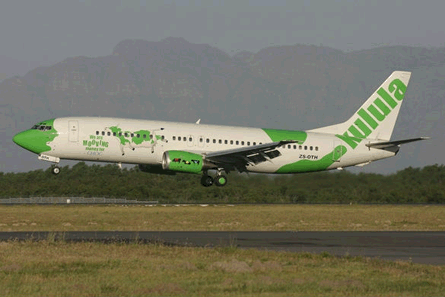Early clearances mixed with complacency from tower controllers at Johannesburg helped create the circumstances that forced a Boeing 737 to abort take-off to avoid another 737 crossing the runway.
Johannesburg operations were split between two control towers - West and East - handling operations on runways 21R and 21L respectively.
Tower West had given an early take-off clearance on 21R to a South African Airways 737-800 while it was still travelling along the parallel taxiway.
About 44s after this clearance, a Kulula 737-400, which had landed under Tower East control on 21L, was handed over to Tower West as it headed for a holding point in preparation to cross 21R.
 |
|---|
| Air Team Images A Kulula 737-400 ran in to difficulties with Tower West controllers |
Tower West controllers then cleared the aircraft to cross the runway. This clearance was also given early, as it was still 200m (660ft) from the holding point. On reaching it, the Kulula crew found that the red stop-bar lights were switched on and refused to proceed.
South African Civil Aviation Authority investigators say that air traffic controllers realised they had not turned off the stop-bars when issuing the clearance, and extinguished them after being informed by the Kulula crew.
The 737-800 had started its take-off run from intersection N and reached a speed of 101kt (187km/h) when tower controllers ordered its pilots to abort the roll. The abort came as the jet was 210m short of intersection E, says the inquiry, itself around 700m ahead of the crossing aircraft.
Both jets' crews were "confirmation biased" that Tower West had the runway-crossing situation under control, says the SACAA. However, it adds that the sequence of events demonstrates that this was not the case. It says the incident was "life-threatening" and could have been "very costly" had it not been detected in time.
The inquiry attributes the failure to "complacency" and "overconfident" behaviour, leading to inattention in the "undemanding" environment, and adds: "There was no threat of anything going wrong, which heightened a false sense of security with [the tower controllers]."
Tower West's staff comprised a controller and a student undergoing on-the-job training. The student, it points out, had been struggling with performance.
The SACAA is advising that controllers be given guidance over minimum times and distances for issuing take-off and runway-crossing clearances.
Visibility was good at the time of the 27 July 2010 incident. While advanced surface-movement guidance and control system information was used in the investigation, the system had not been commissioned in the tower.
Source: Flight International























